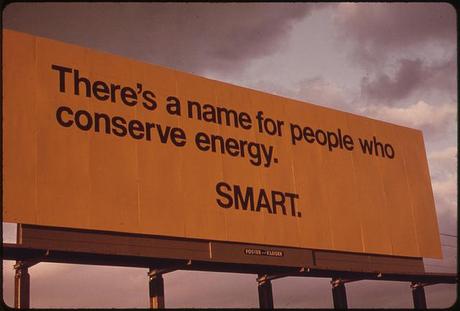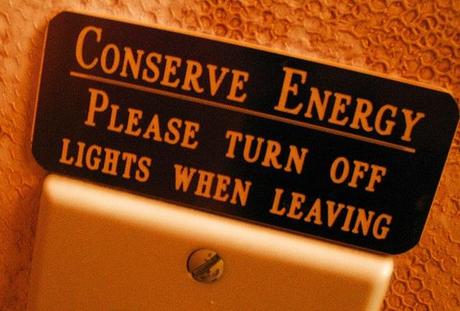What is Energy Conservation?
Energy conservation is one of the words you are hearing more and more. Unfortunately, a lot of the places you will hear it will be in ads marketing products or lifestyle habits that may have nothing to do with actual energy conservation. To learn what real energy conservation techniques are, you have to begin to understand the theory of conservation behind them.
Understanding Energy Conservation
Energy conservation is not about making limited resources last as long as they can, that would mean that you are doing nothing more than prolong a crisis until you finally run out of energy resources all together. Conservation is the process of reducing demand on a limited supply and enabling that supply to begin to rebuild itself. Many times the best way of doing this is to replace the energy used with an alternate.
In the case of fossil fuels, the conservation also can include finding new ways to tap into the Earth’s supply so that the commonly used oil fields are not drained completely. This allows for those fields to replenish themselves more. This is not a process that happens overnight, when you are talking about replenishing natural resources you are talking about alleviating excess demand on the supply in 100s of years’ time to allow nature to recover.

Why it is Important?
Without energy conservation, the world will deplete its natural resources. While some people don’t see that as an issue because it will take many decades to happen and they foresee that by the time the natural resource is gone there will be an alternative; the depletion also comes at the cost of creating an enormous destructive waste product that then impacts the rest of life. The goal with energy conservation techniques is reduce demand, protect and replenish supplies, develop and use alternative energy sources, and to clean up the damage from the prior energy processes.
Practical Methods of Energy Conservation
Below are 8 energy conservation techniques that can help you to reduce your overall carbon footprint and save money in the long run.
1. Install CFL Lights: Try replacing incandescent bulbs in your home with CFL bulbs. CFL bulbs cost more upfront but last 12 times longer than regular incandescent bulbs. CFL bulbs will not only save energy but over time you end up saving money.
2. Lower the Room Temperature: Even a slight decrease in room temperature lets say by only a degree or two, can result in big energy savings. The more the difference between indoor and outdoor temperature, the more energy it consumes to maintain room temperature. A more smarter and comfortable way of doing this is to buy a programmable thermostat.
3. Fix Air Leaks: Proper insulation will fix air leaks that could be costing you. During winter months, you could be letting out a lot of heat if you do not have a proper insulation. You can fix those leaks yourself or call an energy expert to do it for you.
4. Use Maximum Daylight: Turn off lights during the day and use daylight as much as possible. This will reduce the burden on the local power grid and save you good amount of money in the long run.
5. Get Energy Audit Done: Getting energy audit done by hiring an energy audit expert for your home is an energy conservation technique that can help you conserve energy and save good amount of money every month. Home energy audit is nothing but a process that helps you to identify areas in your home where it is losing energy and what steps you can take to overcome them. Implement the tips and suggestions given by those energy experts and you might see some drop in your monthly electricity bill.
6. Use Energy Efficient Appliances: When planning to buy some electrical appliances, prefer to buy one with Energy Star rating. Energy efficient appliances with Energy Star rating consume less energy and save you money. They might cost you more in the beginning but it is much more of an investment for you.
7. Drive Less, Walk More and Carpooling: Yet another energy conservation technique is to drive less and walk more. This will not only reduce your carbon footprint but will also keep you healthy as walking is a good exercise. If you go to office by car and many of your colleagues stay nearby, try doing carpooling with them. This will not only bring down your monthly bill you spend on fuel but will also make you socially more active.
8. Switch Off Appliances when Not in Use: Electrical appliances like coffee machine, idle printer, desktop computer keep on using electricity even when not in use. Just switch them off if you don’t need them immediately.
9. Plant Shady Landscaping: Shady landscaping outside your home will protect it from intense heat during hot and sunny days and chilly winds during the winter season. This will keep your home cool during summer season and will eventually turn to big savings when you calculate the amount of energy saved at the end of the year.
10. Install Energy Efficient Windows: Some of the older windows installed at our homes aren’t energy efficient. Double panel windows and other vinyl frames are much better than single pane windows. Choosing correct blinds can save on your power bills.

Other Energy Conservation Techniques
The other few energy conservation techniques may surprise you. While there are practical methods such as insulation, changing light sources, using alternate fuels and carpooling rather than walking – understand the 6 core techniques beneath them will show you more about what to do in life.
1. Education: Education is probably the most powerful of the energy conservation techniques that can be used. Education is about more than teaching people the importance of conservation, it is about showing the alternative choices that can be used in construction, manufacturing and other processes.
2. Zero Energy Balance: Zero Energy Balance is more than techniques of conserving energy in green construction. It is a process of re-evaluating and retrofitting manufacturing and commercial operations so that they can harvest and store energy, as well as take and replace it onto the grid to relieve brown out stresses.
3. Alternative Power: There are more processes that are starting to use alternative power and fuel sources in many different areas of life. The use of alternative power is one of the most key energy conservation techniques because almost all of the transition models require that the existing processes be upgraded or replaced to more energy efficient models too.
4. Cap and Trade Agreements: Cap and trade agreements are used as part of the process of regulating and conserving consumption and pollution for manufacturing industries. The companies are “allowed” a certain emission rate which they can bid buy to extend. The extension bid is then used for compensating projects. While this may not seem like it is directly related to energy conservation it is very much at its core.
5. Reduced Demand: There are numerous initiatives that are working to reduce the overall demand on the energy resources of the world. This can range everywhere from education programs to changing the type of required insulation in new construction.
6. Research & Development: Continued funding of research and development projects in the energy conservation field is how we discover the changes that can be made to reduce consumption and discover renewable methods to provide us with the energy that modern life requires. It should be one of the energy conservation techniques that are most valued as it is what holds the promise for leading to a solution to the world’s energy crisis.

